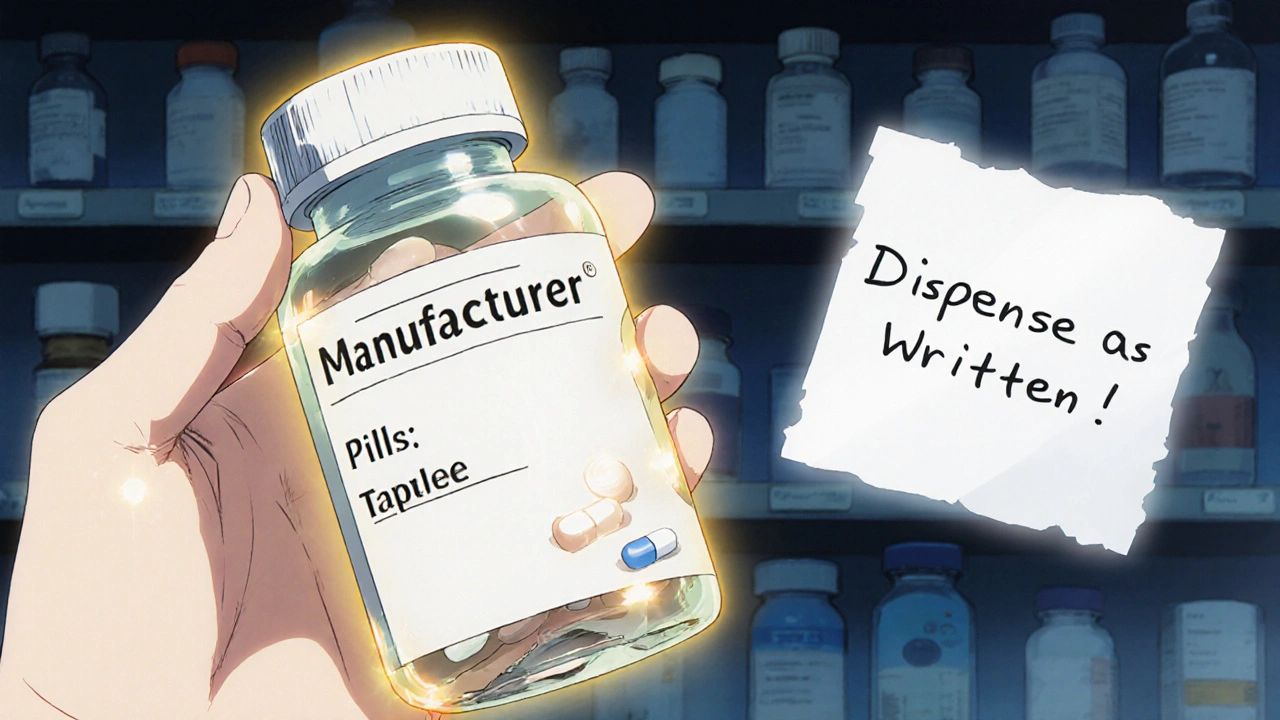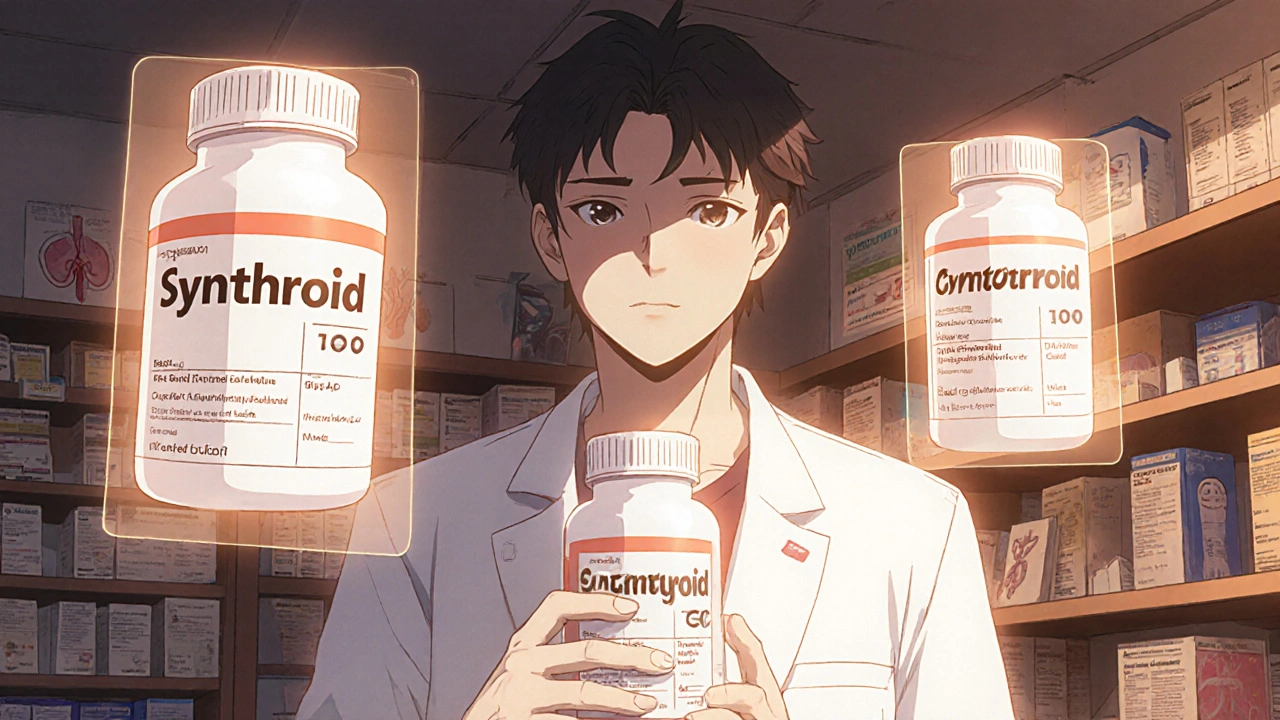Most people assume that if a drug is available as a generic, it’s just as good as the brand name-and for most medications, that’s true. But there are real, medically valid reasons why your doctor might write a prescription that says "dispense as written" or "brand medically necessary". It’s not about preference. It’s not about profit. Sometimes, it’s about keeping you safe.
When Generics Aren’t Enough
Generic drugs are required by the FDA to be bioequivalent to their brand-name counterparts. That means they must deliver the same active ingredient at the same rate and amount into your bloodstream. The acceptable range? Between 80% and 125% of the brand’s performance. Sounds close enough, right? But for some drugs, even a 20% variation can be dangerous. These are called narrow therapeutic index (NTI) drugs. With NTIs, the difference between a therapeutic dose and a toxic one is razor-thin. A little too much, and you risk serious side effects. A little too little, and the treatment fails. Examples include:- Levothyroxine (Synthroid) for thyroid disorders
- Warfarin (Coumadin) for blood thinning
- Levetiracetam (Keppra) for epilepsy
- Cyclosporine for organ transplant patients
It’s Not Just About the Active Ingredient
Generics have the same active ingredient, yes. But they can contain different fillers, dyes, coatings, and binders. These are called inactive ingredients. For most people, they don’t matter. But for some, they do. Take ciprofloxacin, an antibiotic. One generic version might use a different coating that irritates the stomach. Another might contain lactose-problematic for someone with severe intolerance. Patients have reported nausea, bloating, or even diarrhea after switching to a different generic manufacturer, even though the active drug was identical. This isn’t rare. A 2022 analysis of patient complaints on Drugs.com found that 37% of negative reviews for generic antibiotics mentioned inconsistent side effects tied to inactive ingredients. These aren’t allergies. They’re intolerances. And they’re real. Some brand-name drugs also use proprietary delivery systems. Advair’s Diskus inhaler, for example, is designed to release medication in a very specific way. Generic versions may contain the same drugs, but the delivery mechanism can differ. For someone with severe asthma, that difference can mean the difference between relief and an emergency room visit.Why Doctors Still Prescribe Brand Names
Doctors aren’t prescribing brand names because they’re paid to. In fact, most don’t get any incentive at all. The reasons are more subtle-and often rooted in experience. A 2018 study of over one million prescription notes found that doctors used brand names in 15-20% of cases, even when generics were available. Why? Because they’ve seen what happens when patients switch. One patient with epilepsy had a seizure after a generic swap. Another with hypothyroidism developed heart palpitations. These aren’t theoretical risks. They’re lived experiences. The American Medical Association’s guidelines are clear: brand-name prescribing is only justified when scientific evidence shows a real difference in outcomes. That means:- NTI drugs
- Patients who’ve had documented failure with multiple generics
- Patients with confirmed reactions to inactive ingredients
Insurance and the Real Cost
The cost difference is staggering. In 2022, the average brand-name prescription cost $471.67. The generic? $13.76. That’s over 97% less. If your doctor prescribes a brand-name drug without a valid medical reason, your insurance might not cover it-or they’ll make you pay a much higher copay. One Kaiser Family Foundation survey found that 42% of patients paid more out of pocket simply because their doctor prescribed a brand name when a generic was available. Insurance companies know this. When a doctor writes “brand medically necessary,” they often require prior authorization. That means your doctor has to submit paperwork, and you might wait up to 72 hours for approval. Approval rates vary: 89% for epilepsy drugs, but only 45% for acid reflux medications like omeprazole. If your doctor prescribes a brand name and your insurance denies it, you’re left with two choices: pay hundreds of dollars, or switch to a generic. And if you’ve already had a bad reaction? That’s not a choice-it’s a risk.What You Can Do
You don’t have to accept a brand-name prescription without asking questions. Here’s what to do:- Ask: “Is there a generic version available?”
- If yes: “Is this one of those drugs where switching could be risky?”
- If you’ve had a bad reaction to a generic before: Tell your doctor. Write it down. Ask them to note it in your chart.
- If your doctor insists on brand: Ask them to write “dispense as written” or “brand medically necessary” on the prescription. This prevents the pharmacist from substituting.
- Check the FDA’s Orange Book. It lists which generics are rated as equivalent. You can ask your pharmacist for this info.

What’s Changing
The FDA is paying more attention. In 2023, new guidance required generic manufacturers to match the shape and color of brand-name pills to reduce confusion and errors. That’s a big step-because many medication mistakes happen when patients think they got the wrong drug because it looks different. There’s also a growing trend called “authorized generics.” These are made by the original brand company but sold under a generic label. They’re identical to the brand in every way-active ingredient, inactive ingredients, even the coating. They’re cheaper than the brand but avoid the variability between generic manufacturers. And in the future, biosimilars (generic versions of biologic drugs) will become more common. These are complex molecules, and switching them carries even higher risks. Experts predict that by 2027, 45-60% of biologic prescriptions will be filled with biosimilars-but only if patients are carefully monitored.The Bottom Line
For 90% of prescriptions, generics are just as safe and effective. They save billions every year. That’s a good thing. But for a small group of patients-those on NTI drugs, those with known sensitivities, or those who’ve had bad reactions-brand-name drugs aren’t a luxury. They’re a necessity. The key is knowing which side you’re on. If you’re taking a medication where small changes matter, don’t assume generics are interchangeable. Talk to your doctor. Ask questions. Know your options. And never be afraid to speak up if something feels off after a switch.Can pharmacists substitute a generic if the doctor wrote "brand medically necessary"?
No. If a doctor writes "dispense as written," "do not substitute," or "brand medically necessary" on the prescription, pharmacists are legally required to fill it exactly as written. In 49 U.S. states and Washington D.C., pharmacists can substitute generics only if the prescriber doesn’t block it. Texas has additional rules for certain drugs, but the principle is the same: the prescriber’s instruction overrides automatic substitution.
Why do some patients react badly to generics even though they’re "the same"?
Generics contain the same active ingredient, but they can use different inactive ingredients-like fillers, dyes, or coatings. These can affect how quickly the drug dissolves or how your body absorbs it. For people with sensitivities, these differences can cause nausea, bloating, or even changes in how well the drug works. This is especially true for narrow therapeutic index drugs, where small changes in blood levels can cause serious problems.
Are brand-name drugs better quality than generics?
No. The FDA holds generic manufacturers to the same quality standards as brand-name companies. Both must meet strict rules for purity, strength, and manufacturing. The difference isn’t quality-it’s consistency. Brand-name drugs are made by one company, so every batch is identical. Generics may come from different manufacturers, and while each batch meets FDA standards, small variations between manufacturers can occur.
How do I know if my drug has a narrow therapeutic index?
Common NTI drugs include levothyroxine, warfarin, phenytoin, cyclosporine, and digoxin. Your doctor or pharmacist should know. You can also check the FDA’s Orange Book online or ask your pharmacist to look it up. If you’re on one of these drugs, it’s wise to stick with the same brand or manufacturer unless your doctor advises otherwise.
What should I do if my insurance denies coverage for a brand-name drug?
Ask your doctor to file a prior authorization request. They’ll need to explain why the brand is medically necessary-often using the FDA’s list of NTI drugs or your personal history of adverse reactions. If denied, ask if an authorized generic is available. These are made by the brand company and often covered by insurance at a lower cost. If all else fails, ask about patient assistance programs from the drug manufacturer.
Is it true that brand-name drugs help fund future innovation?
It’s a common argument from drug companies, but it’s misleading. Most brand-name drugs are already off-patent and no longer fund new research. The profits from these older drugs go to shareholders, not R&D. True innovation comes from new drugs still under patent, which are rarely replaced by generics. Prescribing brand names for old, off-patent drugs doesn’t fund future breakthroughs-it just increases costs for patients and insurers.

